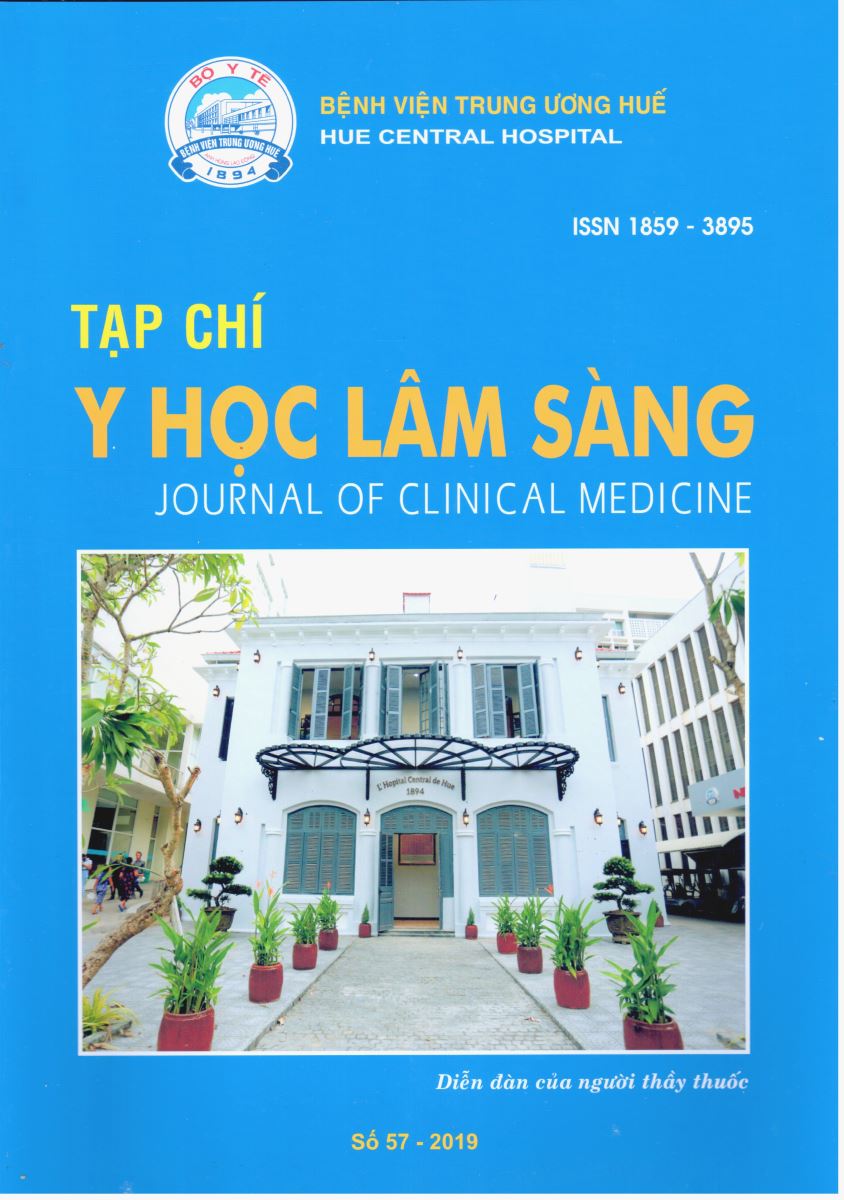Abstract
Objectives
1. Study on hemostatic disorders of patients with polytrauma in the intensive care unit, Hue Central Hospital.
2. Survey the correlation between hemostatic disorders with severity of polytrauma (through index ISS).
Subjects and methods
44 patients were diagnosed with polytrauma due to traffic accidents or activities accidents and were treated at the intensive care unit of Hue Central Hospital from August 2018 to April 2019.
Cross-sectional descriptive study.
Results and conclusion:
- Primary hemostatic disorders: platelet count decreased 20.5%, partial clot contraction was 18.2% and no clot contraction was 2.3%.
- Secondary coagulation disorders: exogenous clotting disorders accounted for 29.5%, endogenous clotting disorders accounted for 11.4%, decreased plasma fibrinogen concentration 13.6%.
- Fibrinolytic disorders: positive D - dimer accounts for 4.5%, percentage of positive FDP 4.5% and 4.5% of patients with polytrauma were scattered complicated by disseminated intravascular coagulation.
- The number of platelets: Survey correlation coefficient r = - 0.601, regression equation y = -3.9083 x + 297.37 .
- The rate of prothrombin: Survey correlation coefficient r = - 0.628, regression equation y = -1.0838 x + 102.59.
- APTT(actived Partial Thromboplastin Time) : Survey correlation coefficient r = 0.707, y = 0.87 x +16.63.
- Fibrinogen plasma : Survey correlation coefficient r = - 0.245, regression equation y = -0.0259 x +3,6337.
References
Nguyễn Trường Sơn và cộng sự (2011), “Khảo sát một số đặc điểm rối loạn đông máu trên bệnh nhân đa chấn thương tại Bệnh viện Chợ
Rẫy”, Tạp chí Y học Việt Nam, 9(2), tr. 127-130.
Nguyễn Trường Sơn và cộng sự (2011), “Một số nhận xét truyền máu trong 24 giờ đầu trên bệnh nhân đa chấn thương tại Bệnh viện Chợ Rẫy”, Tạp chí Y học Tp. Hồ Chí Minh, tr. 239-243.
Biswadev Mitra et al (2015), “Acute coagulopathy and early deaths post major trauma”, Injury. int. J. care, pp. 1-4.
Fries D. and W.Z.Martini (2010), “Role of fibrinogen in trauma-induced coagulopathy”, British journal of Anaesthesia, pp.116- 121.
Gando S. et al (2016), “Trauma, Shock, and DIC: lessons from the classical literature”, Ann Surg, pp. 1.
Kanchana Rangarajan et al (2014), “Coagulation studies in patients with orthopedic trauma”, J. Emerg Trauma Shock, 3(1), p. 4-8.
Ladislav Mica, Kaspar Rufibach, Marius Keel, Otmar Trentz (2013), “The risk of early mortality of polytrauma patients associated to ISS, NISS, APACHE II values and prothrombin time”, Journal of trauma, pp. 1-7.
Ladislav Mica, Kaspar Rufibach, Marius Keel, Otmar Trentz (2012), “Independent Predictor of Early Death of Polytrauma Patient: An Analysis
of 696 of Patients”, J. Trauma, pp. 1-5.
Mark Midwinter et al (2017), “Resuscitation and coagulation in the severely injured trauma patient”, The royal society, pp. 192-203.
Tscherne Regel (1996), “Care of the polytraumatised patient”, The journal of bone and joint surgery, pp. 840-851.
Tubetsu, Mineji Hayakawa et al (2011), “DIC at an early phase of trauma is associaeted with consumpion coagulopathy and excessive fibrinogenis both by plasmin and neutrophil elasase”, Surgery, 149, pp. 221-230.
| Published | 11-01-2025 | |
| Fulltext |
|
|
| Language |
|
|
| Issue | No. 57 (2019) | |
| Section | Original article | |
| DOI | 10.38103/jcmhch.2019.57.6 | |
| Keywords | Từ khóa: Đa chấn thương, rối loạn cầm máu. Keywords: Polytrauma trauma, hemostatic disorders. |

This work is licensed under a Creative Commons Attribution-NonCommercial-NoDerivatives 4.0 International License.
Copyright (c) 2019 Journal of Clinical Medicine Hue Central Hospital

